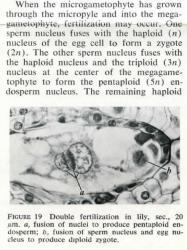It's less than 6 months, I bumped something that was dead for 2 and a half years just to flesh out a mathematical technicality
https://garden.org/thread/view...
so no need to apologise, I get that some topics are likely to be viewed randomly for years because of various keywords.
I agree the barriers to pollination would still be there...just not sure embryo culture would be necessary, imagine it could be significantly reduced but given full "code" is there to create viable endosperm I would think some would germinate and carry on to bulb...which isn't to say that viability from that already reduced pool would be high, just a few lucky exceptions (I like the exceptions that seem impossible)
But it goes back to not sure any 4N oriential exists, a lot of OT, few LO so it's kind of dead end on that front to begin with. It's still a worthy experiment but currently not within reach due to the missing 4N Oriental/s.
Agree there are, I found seeds of some and other tetra combinations (what's commercially available in Australia as far as tetraploids are concerned seems awfully limited...), so different approach and possibly odder experiments to come in 2 to 3 years and results in 4 to 6.
On a slight tangent. Is the fertility between a parent and child reduced or not an issue. I mean say I crossed
(this example is 4n asiatic but not really relevant to my question...although if there is a difference at 4n and 2n then feel free to mention it, more info never hurts)
Tresor x Red Velvet and got seedling A
Would
A x Red Velvet
have potential incompatibility issues?
I don't imagine it would because species and strains exist and often those involve some degree of sibling seedlings crossing but I personally don't know the answer, just assuming.
